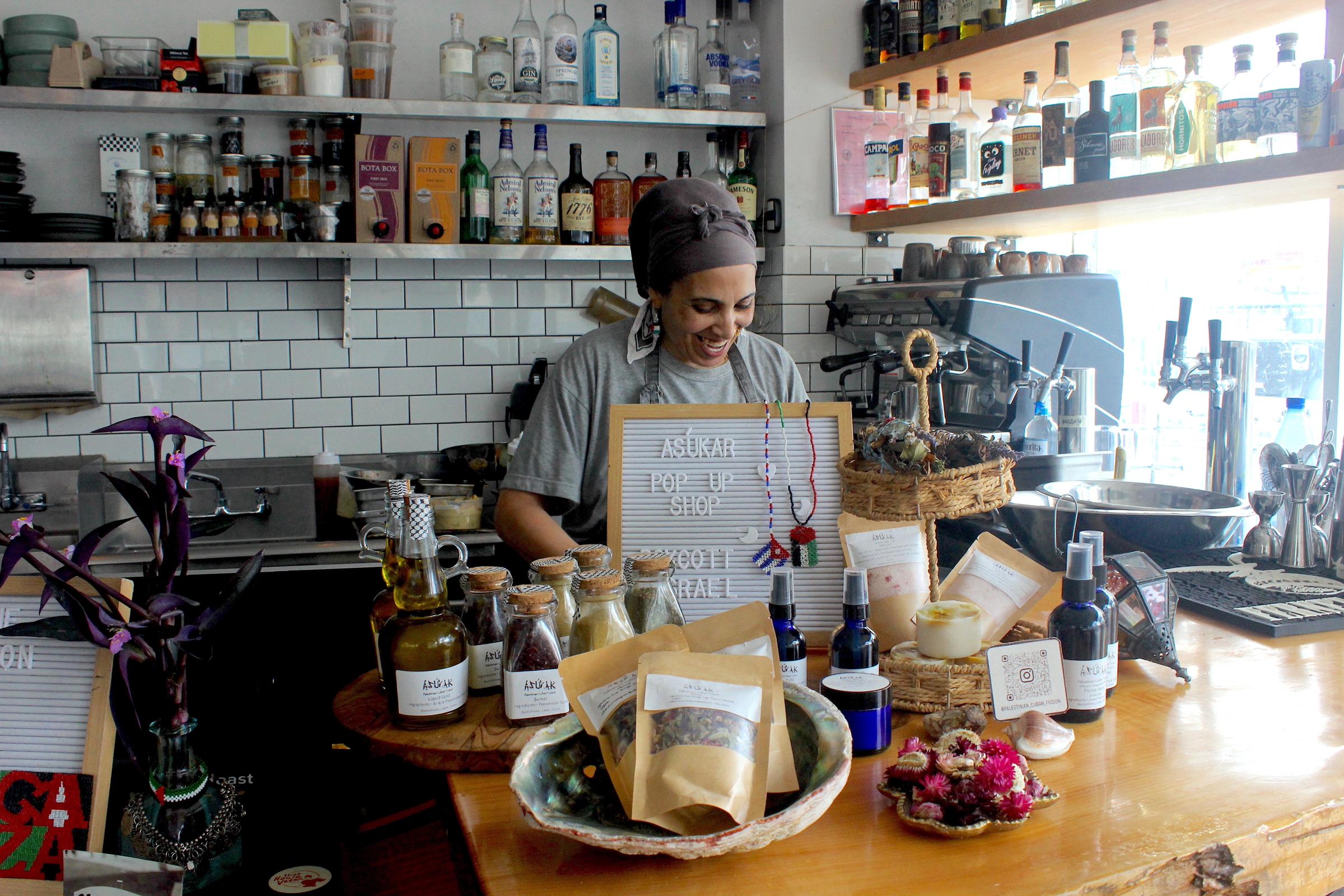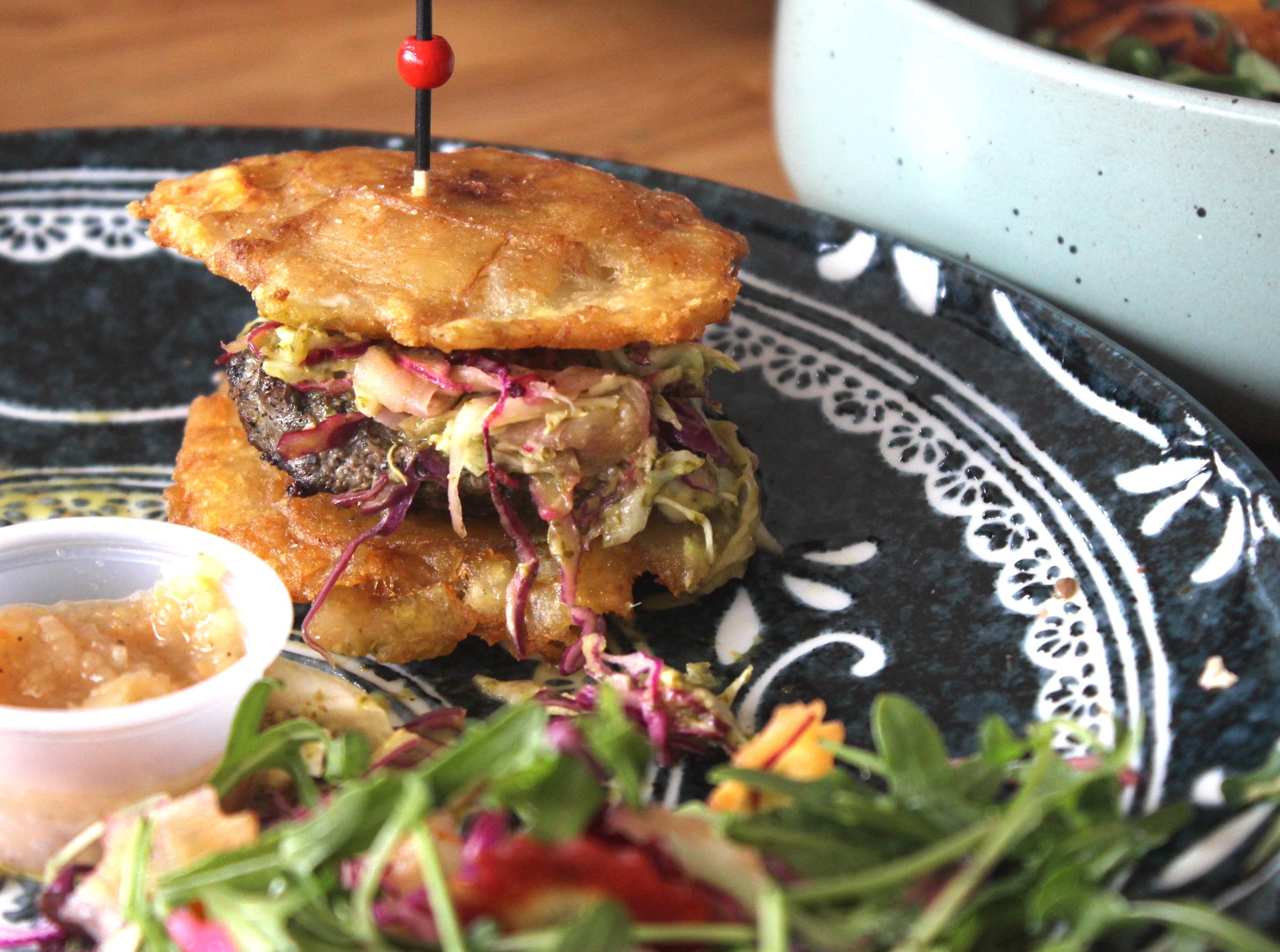Oakland Restaurant Week
ASÚKAR Palestinian Cuban Fusion
1501 Harrison St.
Oakland (inside Tamarack)
ASÚKAR is a bit elusive. You have to know to look for it. A Palestinian Cuban Fusion pop-up running Wednesdays and Fridays from 11 a.m.-3 p.m., it is inside a collectively run bar and restaurant called Tamarack on the corner of 15th and Harrison. (It also operates at 528 8th St. on Saturdays and Sundays.) There is no website, but the March schedule is posted on the Instagram account, so I knew when to go.

We stepped inside the humble and snug bar, and owner and chef Nikki Garcia warmly welcomed us. She wore beaded Palestinian flag earrings and had concocted delicious smells of cumin and herbs wafting from pans on the gas stove. A small selection of homemade items like dried sumac and Florida water were for sale. There was no prix fixe menu for Oakland Restaurant Week as the website suggested, but it simply didn’t matter.
There were four of us, and all the seats on the first level were taken, so she made space for us on the second floor appearing to be a community space with a small lending library. The ASUKÁR menu had five savory items. We ordered each one to be sure to get the full experience.
We made our order downstairs at the counter since Garcia was cooking and serving all by herself. “My husband says I’m a bruja,” she said, flashing a mischievous smile. “I’m a good one too.”
Before long, she arrived with plates of luxurious and colorful fusion cuisine. We began with the Palestinian za’atar oyster mushroom boats. “It’s like an herb forest in your mouth,” my amateur chef friend declared. The gem lettuce with a touch of light, creamy, garlicky hummus made a fluffy bed for the tender marinated mushrooms leaving my mouth with the woodsiness of marjoram, tang of sumac, and nuttiness of the sesame seeds.
That was just the beginning.
I gravitated towards the maduros negros. The sweet plantains were soft and creamy on the inside and crunchy in the places they were caramelized on the outside. We were all really impressed by the black beans. “Sugar and vinegar” Garcia shared as the secret, learned from her Cuban husband who in turn learned it from his grandmother.
Next was the falafel with hummus baladi shatta & cabbage salad. Garcia’s eye for presentation was visible in each dish, and every detail was attended to: the radicchio bowl for the hummus, the microgreens and edible flowers topping the plantains and mushrooms, the watermelon radishes peeled and cut to look like flowers, the red beads on the top of the toothpicks stabbed through the sliders. In addition to the delicious dill-forward flavor, we all were delighted by the contrast of the bright green herby interior of the falafel with the dark, crispy exterior.
Everything was salted and seasoned to perfection. The homemade harissa was so fresh I could see the cumin and bell pepper seeds coating the juicy wings.

Finally came the dish where the two cuisines created alchemy: the tostone slider. Two words the modern eater is familiar with and yet, the name does not do justice to the cleverness of the idea. A perfect pop-up food. Brilliant to use the crunchy Cuban tostone (twice-fried plantain) as the buns for the slider, especially since gluten has become a foe to many. Having lived in Berlin where Mediterranean food flows like water, I’ve had beef kufta kebab seasoned with allspice, cardamom, and coriander many times over, but never before shaped into a small juicy slider patty, sandwiched between tostones, and topped with a spicy vinegar-based slaw.
Sophisticated and comforting, the kufta tostone slider is the type of ingenuity and creativity that inspires those of us with multi-ethnic backgrounds to fully embrace ourselves.
As we wrapped up this bit of Palestinian-Cuban food paradise, Garcia came back up to take our plates. “I care about the presentation of the food. My plate is my canvas.” I’m privileged to bear witness to her artistry.






